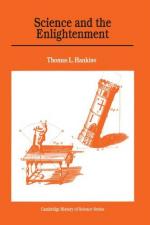
|
| Name: _________________________ | Period: ___________________ |
This quiz consists of 5 multiple choice and 5 short answer questions through Chapter 4, Chemistry.
Multiple Choice Questions
1. Lavoisier, along with the chemists Macquer, Cadet, and Brisson, performed experiments on ________ at the highest temperature available.
(a) Gold.
(b) Diamonds.
(c) Rubies.
(d) Magnets.
2. Who was the most important German chemist, whose papers in the "Memoires" of the Berlin Academy, during the 1740s and 1750s, earned the admiration of the French chemists?
(a) Baron d'Holbach.
(b) Johann Juncker.
(c) Andreas Sigismund Marggraf.
(d) Nicolas Lemery.
3. In 1688, Fontenelle wrote a treatise on the nature of the eclogue or ________.
(a) Pastoral poem.
(b) Sonnet.
(c) Limerick.
(d) Haiku.
4. Who was France's greatest hero of the Enlightenment partly because he was from England, the source of free thought and liberty and partly because he had solved the riddle of the planets, showing that their motions obeyed the same laws as motions on earth?
(a) Boyle.
(b) Fontenelle.
(c) Swift.
(d) Newton.
5. The narrator reveals that mathematicians pursued ________, in which the physical object was reduced to a few idealized properties that were capable of quantification.
(a) Analysis.
(b) Psychology.
(c) Rational mechanics.
(d) Synthesis.
Short Answer Questions
1. In 1729, ________, a dedicated amateur experimenter and occasional contributor to the "Philosophical Transactions" of the Royal Society, discovered that electricity could be communicated over rather long distances by contact.
2. Georg Stahl renamed the oily earth ________, according to the narrator in Chapter 4.
3. From ________'s law of falling bodies, it was known that the heights would be proportional to the squares of the velocities at impact.
4. According to Chapter 2, for Newton, ________ consisted in "making experiments and observations and in drawing general Conclusion from them by Induction."
5. The reintroduction of atomism into chemistry was accomplished by a meteorologist, ________, who became a chemist only when he saw the implications for chemistry of his ideas about the atmosphere.
|
This section contains 286 words (approx. 1 page at 300 words per page) |

|




